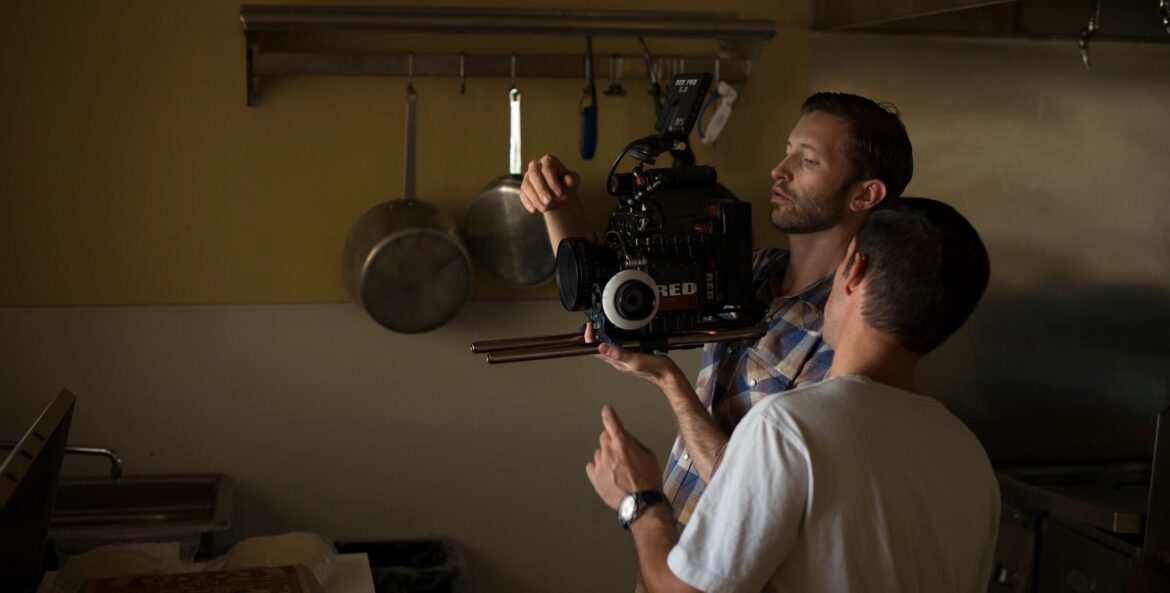Horror movies have been so successful even in the face of real-life horrors, and that’s one reason indie filmmakers have been able to create these runaway hits despite a tiny budget by Hollywood standards. They can create these hits because it doesn’t take much to create an exciting experience of fear that creates a pleasurable rush for attendees through exploring their fears in a controlled and safe environment.
Here’s how it works — and why a small budget of $50,000 or less has resulted in some multi-million-dollar success stories.
Why Are Horror Movies So Successful Even in Horrible Times?
Why We Love to Be Scared So Much
Several psychologists have recently tackled this problem and have come up with some reasons why we love being scared.
– We can feel a great pride at making it through the movie, followed by great sense of relief combined with euphoria, as Nicole Johnson has written in an October 30, 2020 article for the National Geographic.com’s science section describing her love of horror films since 1987. As she explains: “For me, horror movies remain an invaluable coping tool. The effect is a primary tenet of what’s called exposure therapy — forcing ourselves to face fear as a way to overcome it.”
– Horror movie fans may like the experience of being scared, because that helps them feel a sense of mastery or control over their fears when they watch the film from the safety of their home or a movie theater.
– Another reason for liking these films is that we often feel pleasure after watching a horror film, because we feel a sense of relief, as suggested by John Edward Campbell, a Temple University professor of media studies. This feeling of relief and pleasure results from the release of dopamine as one calms down and feels relief after seeing a horror film, because the body reacts as it would in a real-life fear inducing situation — one’s heart rate increases, the pupils dilate, and one’s blood pressure goes up. As a result, one feels excited and then relaxes, as the body floods with dopamine due to the fear triggered by seeing the movie.
– Then, too, researchers have found that the euphoria which many viewers of horror films experience can help them cope with other stressors they subsequently feel, which could explain why horror films have continued to do well despite the horrors of the pandemic. The film takes us away from real fears and anxieties about the virus and from the feelings of isolation, loneliness, and depression some feel due to the restrictions on activities and seeing others. Instead, we experience a sense of controlled fear in the film, and afterwards feel that sense of relief that can carry over in the everyday world.
– Another source of pleasure in horror films is that it is a genre full of suspense, jump scares, and other sources of tension which keeps viewers involved, as Sanna Rangwala points out in an October 29, 2021 Daily Telegram article: “Love Horror Movies? This Is What Psychology Has to Say About It.” As she points out, a horror film triggers our fight-or-flight response due to fear, but since we know there’s no real threat, “we can feel the rush without worrying about our own safety because we know nothing is going to hurt us in the end.”
– Still another explanation from psychologists is “excitation transfer theory,” in which the residual excitement from one stimulus can increase the excitation one feels in response to another stimulus. An example of this might a viewer feeling even more aroused and excited in making love with a partner after seeing a horror film.
– Perhaps another factor contributing to the popularity of horror films is the same kind of draw that attracts individuals to “slumming” or engaging in “taboo” behaviors, since they are more exciting. The reason this might be a factor is that the horror film has a “less than stellar reputation” and has been frequently regarded…as the runt of the cinema family and held in lower esteem than other film categories.” Yet despite this “relative lack of formal industry recognition and professional respect, horror thrives,” as psychiatrist G. Neil Martin points out in an article in an October 18, 2019 Frontiers of Psychology article, “Why Do You Like Scary Movies? A Review of the Empirical Research on Psychological Responses to Horror Films.”
– Martin further suggests that seeing a horror film might be a safe way to express one’s feelings of aggression and attraction to violence, which may be a reason that psychologists have found that men are more likely to “align themselves with violence” and are more likely to view and like horror films than women.
– People may also find even more enjoyment in horror films when they know what type of events they will view, as a result of “priming” due to receiving this advance information. For instance, they may be drawn to particular types of threats, such as zombies, huge insects, vengeful ghosts, dangerous diseases, and more.
– Perhaps, another reason for the attraction of horror films is that horror generally includes an element of evil, channeled via a human, creature, or supernatural force which can change events and cause disruption and instability, which the protagonists have to challenge and seek to defeat, as Martin notes. The result can be a feeling of excitement triggered by facing one’s most powerful fears, hough in the film, there is often a teaser that the evil being is still around and may come back with more challenges and threats to evoke fear.
– Still another reason for the appeal of horror movies is that viewers are drawn to sensation seeking, which involves seeking “varied, novel, complex, and intense sensations and experiences,” as Martin describes it. They like thrills and adventure seeking, and they get that from the horror film
– Additionally, people gain pleasure from negative emotions, and, according to psychologist Mathias Clasen in an October 13, 2021 Psychology Today article “On the Psychology of Horror Movies,” horror “provides an imaginative context in which people can play with fear.” Moreover, viewers feel for the characters when they face terrify danger, and we are especially responsive to seeing the scary monsters, ghosts, and other horrors from the grave, since those horrors “stimulate the fear system with which evolution equipped us…and the threats depicted in horror movies tend to reflect dangers that have haunted our species for thousands or even millions of years.” An example is the huge spiders, slithering snakes, and reptilian monsters that are not modern dangers, but the threats our long-ago ancestors worried about.
– Finally, as Clasen suggests, not only do horror movies “immerse us in fictional worlds that are full of ancestrally resonant dangers,” but they are very relevant to modern conditions, for when we “play with fear, we may learn important lessons about the dangers of the world as well as our own responses to danger. We learn what it feels like to be afraid, and we get to practice and hone fear-regulation strategies. We may even become more resilient in the process.” In fact, researchers found that people who watch many horror movies experienced less psychological distress in facing the COVID-19 lockdowns, perhaps because these films provide a way for people to practice emotional regulation, so they get better at “managing their own fear and anxiety through engaging in recreational fear.”
Aside from the reasons horror films are appealing, certain tropes contribute to the fear evoking qualities of these films. Among them are the special auditory effects, such as the loud sounds after a long silence that produces a jump scare and the sounds of creaking doors, screams, the hiss of a snake or cat, a head cracking under a hammer, the bang of a falling object, and a branch snapping in a quiet forest at night. Additionally, the use of music and the soundtrack with an ominous sound can contribute to the sense of horror.
Though both resolved and unresolved horror films appear to be equally enjoyed, a positive outcome for the protagonist and a poor one for the antagonist commonly increases the viewer’s satisfaction. Yet, regardless of these differences, just watching a horror film provides a thrill which leads to a pleasurable experience of arousal.
Thus, for all these reasons, go out and enjoy a good horror film. The experience is literally good for your mental health and soul.
The Popularity and Potential of Horror Films
Given all these reasons for enjoying the fear experience in a safe environment, it’s no wonder that horror films are so popular, as indicated by the long history of successful horror films, including those with miniscule budgets.
The returns on investment show that dollar for dollar, horror films of all budgets make a much better return than any other films. It’s a result that has occurred for over a decade.
For example, in a report on the top 100 movies with the best return on investment between 2010 and 2015, 13 out of the top 30 films with the best ROI were horror films, based on data from Studio System, a company that collects entertainment industry data. according to an NPR article: “Horror Is the Best Deal in Hollywood” by Quoctrung Bui. The top five horror films had an ROI of around 2000%, meaning that for every $10, the investor would get back $200. By contrast, the top comedy films only had an ROI of around 1200%. For example, the popular film Paranormal Activity 2 made $236 million but cost $9.4 million to produce and market — an ROI of 2510%.
More recently, one company, Blumhouse Productions, has become a major force in Hollywood because of its successful horror films, according to a January 1, 2020 ScreenRant article, “Horror Movies Make More Profit — Here’s Why” by Michael Kennedy. Blumhouse has released a series of horror films with budgets of $10 million or less and has reported earnings of hundreds of millions for each film. For example, the company’s four Purge films grossed nearly $450 million, with a total budget of $35 million, nearly 13 times earnings. In turn, these budgets have been lower than most major films today because “fear is cheap.” That’s because, as Kennedy writes, “it’s entirely possible to scare the hell out of an audience with little more than strange sounds, unexplained quick movements, and the mere suggestion of a terrifying monster or ghost.”
In another study of Box Office Returns from 2013 to 2018, reported in an OppLoans.com March 18, 2021 article, “Horror Films Cost Very Little to Make and They Make a LOT of Money” by Alex Huntsberger, the earning power of horror films couldn’t be clearer. As an example, he cites the “money-printing movie empire” of Jason Blum, who makes a lot of movies at a very low-cost, such as the wildly successful Halloween, which had a budget of $325,000, but made $47 million at the box office — a 150 times return on investment.
As the six-year study showed, the average ROI for the top-five grossing movies of the past six years, such as Avengers: Infinity War, Jurassic World: Fallen Kingdom, Mission Impossible: Fallout, Star Wars: The Last Jedi, and The Fate of the Furious, was between 365% to 760%, with an average return of five times one’s budget.
By contrast, the ROI for a Blumhouse film in those years was 1285% for The Conjuring Series, 1265% for The Purge series, 1985% for the Insidious series, and even more for the Paranormal Activity series — a 4405% return.
Especially notable is the fact that the first Paranormal Activity film shot in 2007 had a budget of only $15,000 and earned $193 million at the box office, an ROI of 1,289,039%.
Still other horror films with small budgets have similarly made huge scores at the box office. Though none of these budgets have been as low as $15,000, Host, released in March 2020 by Shadowbox Films with a $50,000 budget made $248 million — a 496 times return, and The Wretched, released in May 2020 by IFC, with a budget of $66,000 brought in $4.59 million — a nearly 70 times return, as reported Sarah Whitten in an August 30, 2021 CNBC Article “Even During the Pandemic, Horror Movies Remain One of the Most Profitable Genres at the Box Office”. Most notably, Host and The Wretched were released when most movie theaters were shuttered and most of their revenue came from drive-ins.
Perhaps a key reason that these films can do so well with minimal budgets is they don’t rely on big stars which drive up the costs into the multi-millions of dollars. They also don’t have large casts and multiple locations which result in massive budget increases, due to costs for travel, housing, set-ups, additional days for shooting, and more. Instead, the winning formula typically involves a few friends in a small number of locations, plus some characters for the ghosts or monsters they encounter. Thus, a low-budget horror film can be shot in a week or two and go on to reap massive rewards.
* ** * ** * * * * *
The author is internationally published author and film producer, Gini Graham Scott, PhD, who has published over 200 books, 50 for traditional publishers and 150 for her own company Changemakers Publishing, specializing in books on self-help, popular business, and social issues. She is the author of The Big Con: Scams Targeting Writers, the Victims, and How to Avoid Becoming a Victim and I Was Scammed about all types of scams and how to avoid them. She has written and executive produced 18 feature films and documentaries, featured on the www.changemakersproductionsfilms.com website. An inspiration for this article is that Changemakers Productions is now raising money for its first horror film Dark Cabin, which features 6 friends on a vacation up against Viking ghosts. It’s filming in the New York area in February 2022, and other horror films are planned. She also writes books and scripts for clients. Her website for writing is at www.changemakerspublishingandwriting.com.




